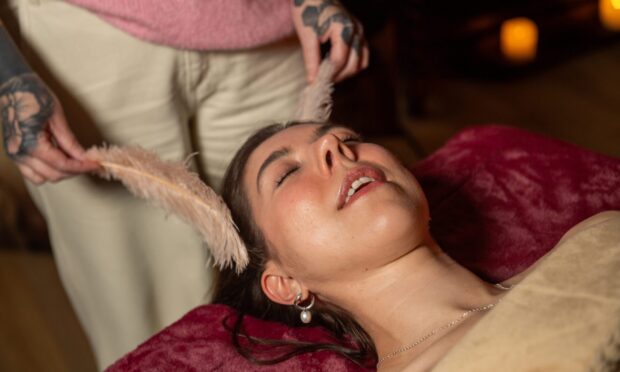It might be something that many take very seriously, but it comes to yoga practice there’s no need to force a straight face, as Deborah Durbin discovered at a rather unconventional class
It’s a wet Tuesday evening and I’m standing in a draughty hall with a bunch of people I’ve never met. I’m here for an event advertised as ‘an evening of fun and laughter’, run by Laughter Yoga expert, Joe Hoare, a jovial chap with a warm welcoming smile for everyone who comes through the door.
Laughter yoga was invented by Indian doctor Madan Kataria in the mid 90s to encourage people to enjoy the health benefits of what is a natural, but often forgotten, emotion. He inspired people to laugh more and worry less and his exercises and teachings are now practised in over 100 countries across the world.
I soon discover that laughter yoga is about losing your inhibitions, as a man starts dancing with a chair, happily chuckling away to himself. He’s happy and child-like as he high-fives everyone in the room and gives a big, beaming smile.
It’s infectious! Within minutes, people who have never met before are smiling at each other, laughing, and not really knowing why.
Apart from making you feel good, laughter has more health benefits than any other emotion. It’s been proved over and over again that positive people live longer than negative, and laughing is a sure way to help positivity. It’s great fun too! Even if you’ve been having a bad day, if you look at the funny side of life and find something that makes you laugh about the situation, it always helps. Our brain can’t define whether we’re faking an emotion or not. It recognises that when we laugh, we feel good, but we don’t necessarily have to feel good to laugh. So even if we fake-laugh, our brain will assume we are feeling good.
Following my laughter yoga session, I decided it’s true – there’s nothing more contagious than laughter. Try these two very quick exercises – you can do them at home, in the car or at work to amp up your happy factor.
The Laughing Buddha: Find a quiet place to sit and close your eyes. Breathe through your nose for the count of five, hold for a count of three then exhale. Do this three times to promote oxygen to the brain. Next, breathe in for a count of five and when you breathe out, say ‘ha-ha-ha-ha’ as you do so. Repeat this three times to release stress.
The Sleeping Buddha: Do this before you go to sleep. Lie on your back, eyes closed. Smile and stretch your arms up and behind you, breathing in for a count of four and out again for a count of four. Keep smiling as this will trick your brain into thinking that you are happy and contented, thus producing happy hormones into your body and creating a better night’s sleep.
This article first appeared in Soul & Spirit magazine, January 2019. For more spiritual inspiration and guidance, visit soulandspiritmagazine.com










